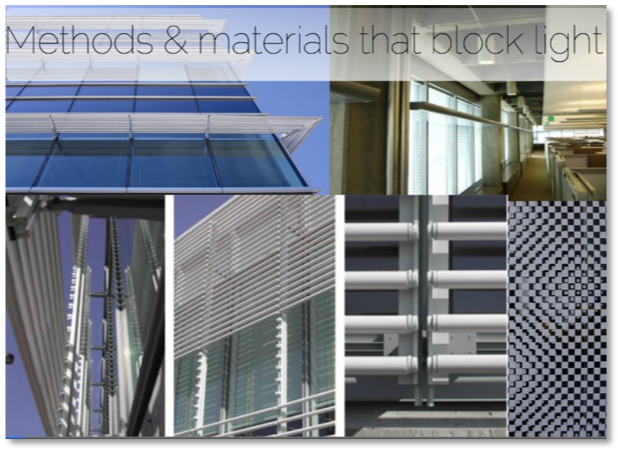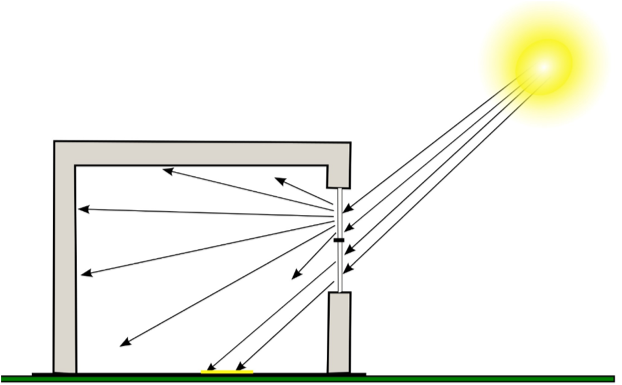How High-Performance Light Harvesting Glass Eliminates the Need for Expensive and Ineffective Passive or Active Daylighting Controls
When occupants are exposed to uncontrolled daylight, they experience thermal discomfort, poor penetration of light, changing illumination patterns, and glare. As a result, interior spaces are uncomfortable at best, and unusable at worst.
The elimination of glare is crucial to ensuring effective and affordable daylighting. Still, typical glare reduction methods utilize blocking of light as the primary defense, thus sacrificing daylighting for glare control. These expensive, and for the most part, ineffective methods include aluminum sun shades, horizontal sun control devices, vertical fins, frit patterns, electrochromic laminations, window films, awnings, and rolling solar shades.

All of these methods are “bolt on,” meaning that they are one-size-fits-all approaches that add cost without adding significant value as compared to effective light management. They are all work-arounds to address the shortcomings of vision glass, which directly exposes building occupants to uncontrolled daylight.
The installation of Solera in vertical applications is virtually identical to that of a standard IGU, saving overall design and construction time and complexity and cost, versus other daylighting approaches such as window treatments, solar shades, electrochromic glass, and light shelves.
Using Solera in tandem with vision glass “where vision is the requirement” allows for maximized daylighting . The omnidirectional diffuse light produced by Solera eliminates the contrast and glare of vision glass.

In addition, window coverings and other means of blocking direct sunlight are often considered essential, however they have a tendency to remain unused, constantly open, or constantly closed. In fact, according to a study by the National Research Council of Canada, 65% of a building’s window area is “permanently occluded by blinds.” This undermines opportunities for daylighting, as well as opportunities to save energy by reducing the need for electric lighting. The National Research Council of Canada says that blinds are the largest reason for failure of projected energy savings.
Furthermore, the appearance of blinds and curtains can quickly deteriorate, and it is often a logistical and financial challenge to purchase and maintain them.
Solera will not deteriorate over time and requires no maintenance. The combination of vision glass and Solera will maintain its function and beauty over a building’s entire life cycle.